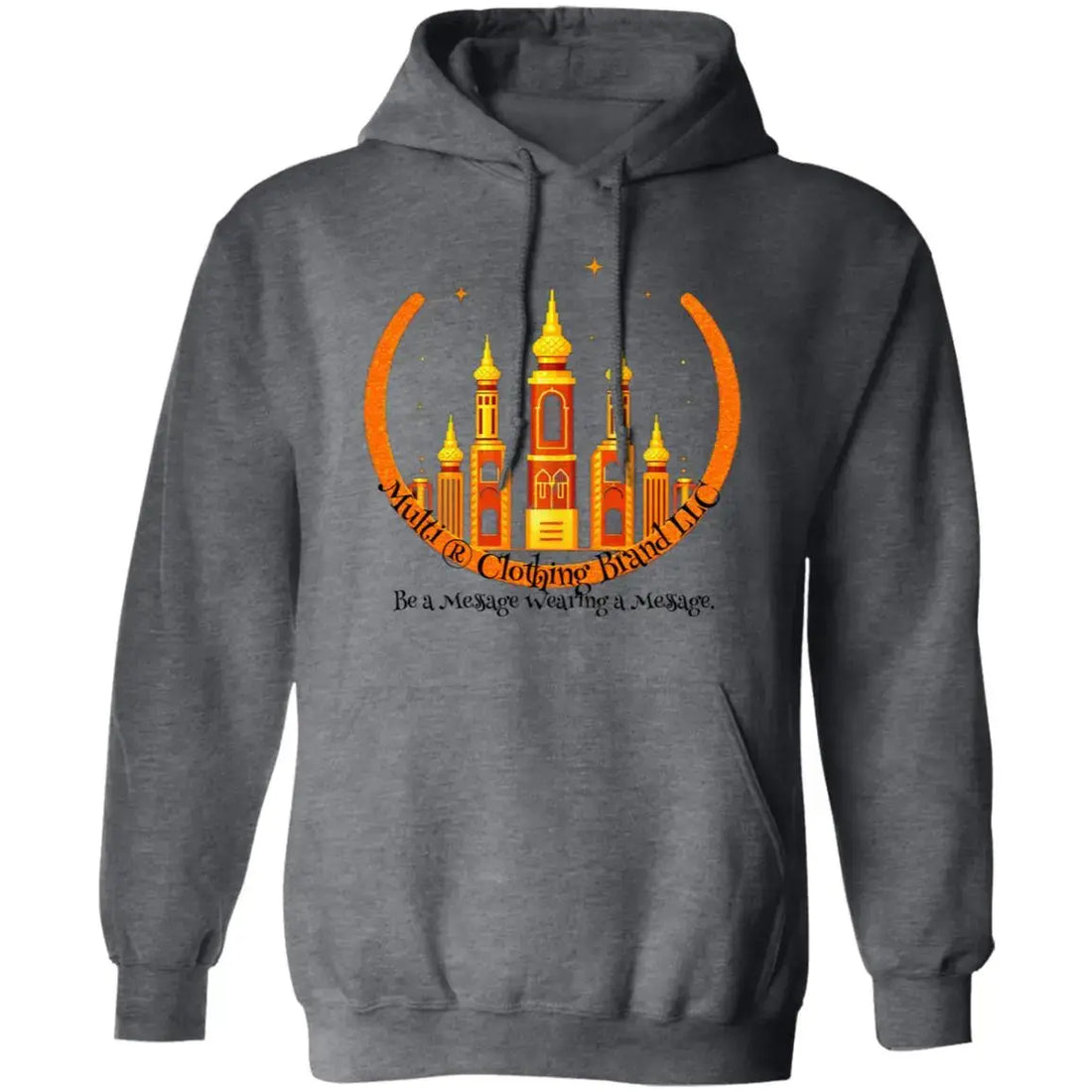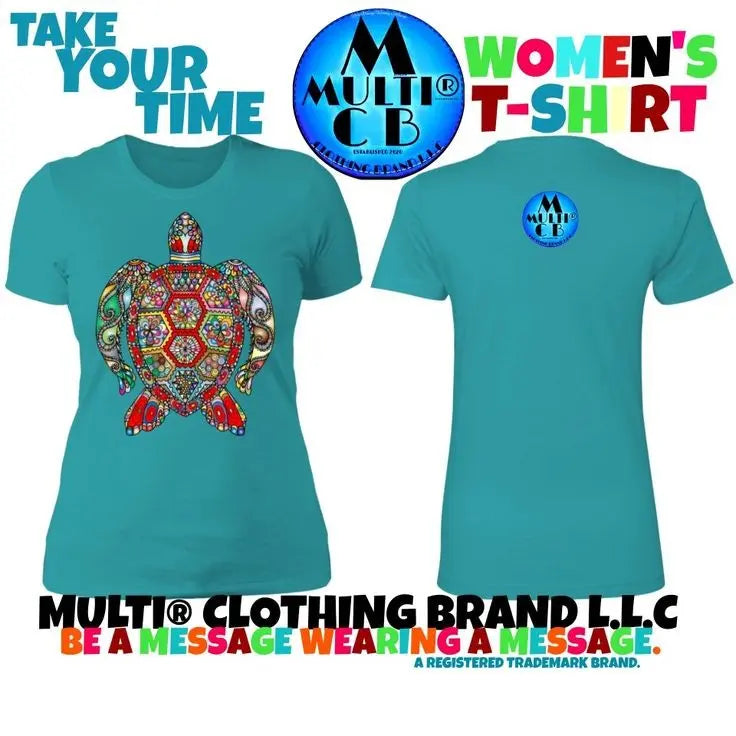Blogs
Level Up Your Style with the 'Towers' Men's G185 Gildan Pullover Hoodie
When it comes to hoodies, finding the perfect blend of comfort, style, and quality can feel like a challenge. But the search ends here with the 'Towers' Men's G185 Gildan Pullover Hoodie from Multi Clothing Brand L.L.C. This isn’t just another hoodie—it's a statement.
Learn moreSpread Positivity with the "Have a Great Day" Men's T-Shirt!
Ever had one of those mornings when you need a little extra push to get the day going? We get it. That’s why the "Have a Great Day" Men's T-Shirt from Multi Clothing Brand L.L.C. is more than just a piece of clothing—it’s a whole vibe.
Learn moreElevate Your Comfort Game: Multi - Adult Fleece Joggers from Multi Clothing Brand LLC
Unleash Your Inner Comfort King with Multi - Adult Fleece Joggers from Multi Clothing Brand LLCIn the whirlwind of modern life, where constant movement and activity are the norm, prioritizing comfort is paramount. And what better way to do that than with a pair of incredibly soft and stylish Multi - Adult Fleece Joggers from Multi Clothing Brand LLC? These joggers are the ultimate embodiment of comfort and style, designed to make you feel relaxed and confident wherever you go. They're not just for lounging around the house, though – they're versatile enough to be worn for a variety of activities, from running errands to hitting the gym to grabbing coffee with friends.Imagine this: you're finally home after a long day. You kick off your shoes, shed your restrictive work clothes, and slip into a pair of these Multi - Adult Fleece Joggers. The soft, plush fleece instantly wraps you in a warm embrace, melting away the stress and tension of the day. The relaxed fit allows your body to breathe and unwind, and the drawstring closure lets you customize the fit to your liking, so you feel perfectly comfortable and secure. Beyond the Comfort: Why Multi - Adult Fleece Joggers are a Must-HaveBut these joggers are more than just a comfy pair of pants. They're a statement piece, a symbol of your commitment to feeling good in your own skin. They're versatile enough to be dressed up or down, making them perfect for a variety of occasions. Pair them with a stylish tee and sneakers for a casual look that's perfect for running errands or grabbing a coffee with friends. Dress them up with a sweater and boots for a more polished vibe that's appropriate for a date night or a casual dinner with friends. Here's the thing: you deserve to feel comfortable and confident, regardless of what you're doing. With Multi - Adult Fleece Joggers from Multi Clothing Brand LLC, you can have both. The Details That Matter: Quality You Can FeelLet's talk about the details that make these joggers so special. They're crafted from premium 7.8 oz 100% Polyester fleece, which is incredibly soft and plush against your skin. It's the kind of fabric that you'll want to touch all the time. The elastic waist and bottom cuff provide a secure and comfortable fit, so you don't have to worry about them slipping or sliding around. And the side pockets are perfect for keeping your essentials close at hand, so you don't have to worry about digging through your bag for your phone or wallet. Let's not forget about the back right hook and loop pocket, which is perfect for keeping your keys or other small items safe and secure. It's the little details that really make these joggers stand out, and they're all designed with your comfort and convenience in mind.More Than Just Joggers: A Lifestyle ChoiceWhen you slip into a pair of Multi - Adult Fleece Joggers, you're not just putting on a pair of pants, you're making a statement. You're saying that you value comfort and style, that you want to feel good in your own skin, and that you're not afraid to embrace your individuality. These joggers are the perfect choice for anyone who wants to feel good in their clothes, regardless of their style or activity level. So why settle for uncomfortable pants that leave you feeling restricted and uninspired? Embrace the comfort and style of Multi - Adult Fleece Joggers from Multi Clothing Brand LLC and experience the difference for yourself.
Learn moreWhen the Dollar Falls: What Motivates You Then?
The Allure of Money: A Powerful Motivator We live in a world where money is the driving force behind countless decisions. It fuels our ambitions, shapes our desires, and dictates our lifestyles. For many, the pursuit of wealth is a primary motivator, a constant driving force pushing them to achieve success and security. It's the key to unlocking a comfortable life, providing for our families, and ensuring a future free from financial worries. This relentless pursuit of financial security can become deeply ingrained in our psyche, shaping our values and determining our choices. The pursuit of wealth can manifest in various ways. It can drive us to work harder, to take calculated risks, and to constantly seek out new opportunities for advancement. We strive for promotions, bonuses, and investments, all in the hopes of securing a comfortable financial future. This is a natural human instinct—a desire to provide for ourselves and our loved ones, to create a life of comfort and stability. The allure of money is undeniable. It provides a sense of control, a feeling of security, and the ability to indulge in desired experiences. We associate it with freedom, opportunity, and the ability to achieve our dreams. It's a powerful force, one that can motivate us to work tirelessly, to overcome obstacles, and to achieve remarkable things. Beyond the Dollar: Finding Meaning in a Changing World But what happens when the very foundation of that motivation crumbles? What if the currency we rely on, the dollar, loses its value? This seemingly distant threat, the prospect of a dollar collapse, is not as far-fetched as some might believe. Economic instability, geopolitical shifts, and unpredictable events could all contribute to a drastic change in the value of our currency. Imagine a world where the purchasing power of your hard-earned savings diminishes overnight, where your carefully crafted financial plans crumble before your eyes. In such a scenario, the question arises: what would motivate you then? Would your ambition fade, or would you find a new compass to guide you? Would you still be driven by the same goals, the same aspirations? Or would you find yourself re-evaluating your priorities, seeking meaning and purpose in a world where the dollar no longer holds its familiar power? The answer to this question can be unsettling, forcing us to confront the true nature of our motivation and the values that lie beneath the surface. Imagine a world where money loses its grip on your life. What would you strive for? Would you find meaning in personal growth, community engagement, or the pursuit of knowledge? The answer to this question may reveal a deeper truth about yourself: that your motivation goes beyond the superficial allure of wealth. It may lead you to a realization that true fulfillment stems from something more profound, something that transcends the limitations of monetary value. Unveiling the Power of Personal Motivation The truth is, true motivation comes from within. It's the fire that burns within you, regardless of external factors. It's the unwavering passion that drives you to overcome challenges, to learn, to grow, and to make a difference in the world. This inner spark is not dependent on the whims of the market or the fluctuations of currency. It's a source of strength that transcends the limitations of material possessions and financial security. Think about the things that truly ignite your passion, the things that make you feel alive. Is it the pursuit of knowledge, the creation of art, the connection with others, or the desire to make a positive impact on the world? These are the things that fuel our soul, the things that give our lives meaning and purpose. They are not contingent on the value of a dollar, nor are they diminished by economic instability. They are the enduring forces that drive us forward, regardless of the circumstances. When the dollar falls, the people who are truly motivated will find a way to thrive. They will adapt, innovate, and create new pathways to success. They will tap into their resourcefulness, their creativity, and their unwavering determination to navigate the changing landscape. Their motivation, rooted in something deeper and more profound, will serve as a guiding light in the face of uncertainty. Consider the stories of individuals who have overcome incredible hardship, individuals who have found meaning and purpose in the face of adversity. They are testaments to the power of human resilience, the strength of the human spirit. Their motivation, fueled by a deep-seated sense of purpose and a belief in their own abilities, has enabled them to navigate through the most challenging of times. Perhaps you'll discover that your passion lies in a different field, or that you have a unique skillset that can be utilized in unexpected ways. The world is full of opportunities for those who are willing to explore and adapt. Think of the ingenuity that emerges during times of crisis. Humanity has a remarkable capacity to rise to challenges and create solutions that were previously unimaginable. So, if you find yourself questioning your motivation in a world where the dollar seems uncertain, don't despair. This could be a chance to discover a deeper, more meaningful sense of purpose. Embrace the challenge, explore your options, and tap into the wellspring of personal motivation that lies within you. Remember, your worth is not defined by the value of a currency. It's measured by the impact you make, the connections you forge, and the legacy you leave behind. Whether you're looking for a stylish and comfortable way to express your love of money, or just want a comfortable T-shirt to wear on your daily adventures, our Money - Ladies - Long S T-Shirt from Multi Clothing Brand LLC is the perfect choice. This T-shirt is made of 100% cotton, preshrunk jersey knit for a comfortable fit, and features a Missy contoured silhouette with a side seam for a flattering look. It's available in a variety of sizes and colors to suit your style.
Learn morePlaying Possum: More Than Just a Phrase, It's a Way of Life - Embodied in a T-Shirt
Playing Possum: More Than Just a Phrase, It's a Way of Life - Embodied in a T-Shirt The world is a cacophony of noise, a relentless onslaught of information, and a constant demand for our immediate attention. Amidst this chaos, it's easy to get swept away, reacting impulsively to every stimulus, every ping, every notification. But there's another way, a more strategic approach to navigating the world, one that involves a certain level of quietude and deliberate observation. It's the art of playing possum, of choosing when to speak and when to listen, when to act and when to wait. It's the art of strategic silence, and for those who understand its power, the Playing Possum - Men's Premium SS - T-Shirt from Multi Clothing Brand L L C is a powerful symbol of that philosophy. Think about the possum itself, a small, seemingly defenseless creature. When faced with a predator, it doesn't fight or flee. It simply goes limp, plays dead. It's a remarkable strategy, a way of blending into the environment and appearing harmless. By doing so, it often manages to escape the predator's attention, giving it a chance to survive and thrive. The Playing Possum Men's Premium T-Shirt captures this essence of strategic silence with its bold and thought-provoking quote: "Some of Us wasn't Sleep, We was just Playing Possum." It's a statement that says, "I'm not just sitting here, I'm observing, analyzing, and waiting for the right moment to act." It's a declaration of awareness, a subtle reminder that there is power in stillness, in the ability to assess the situation before making a move. Playing possum isn't about being passive or inactive. It's about strategic disengagement. It's about stepping back from the immediate fray, clearing your mind, and observing the bigger picture. It's about gathering information, understanding the dynamics at play, and identifying the best course of action. It's about being deliberate, about choosing your battles, and about knowing when to act and when to wait. In a world that constantly pushes us to react, to jump on the latest bandwagon, to be constantly connected and engaged, playing possum can be a powerful antidote. It's a way of reclaiming your power, of asserting control over your own attention, and of making conscious choices about how you engage with the world around you. The Playing Possum Men's Premium T-Shirt is a physical manifestation of this philosophy. It's a way to communicate your understanding of strategic silence, to signal to the world that you're not just going with the flow, but that you're actively observing, analyzing, and choosing your path. It's a statement of self-awareness, a declaration that you're not just reacting, but actively participating in shaping your own reality. But it's not just about the message, it's also about the quality of the shirt itself. The Playing Possum Men's Premium T-Shirt is made with care and attention to detail. It's crafted from 4.3 oz, 100% ring spun combed cotton jersey (Heather Gray 90% cotton/10% polyester), ensuring a comfortable and durable feel. The 32 singles provide exceptional softness, while the 1x1 baby rib-knit set-in collar adds a touch of sophistication. The DIGISOFT® printing method guarantees a vibrant and long-lasting design, so your message will stay strong, even after countless washes. Wearing the Playing Possum Men's Premium T-Shirt isn't just about making a statement, it's about embracing a way of life. It's about taking the time to observe, to reflect, and to choose your actions with intention. It's about recognizing the power of strategic silence and using it to your advantage. So, if you're ready to reclaim your power and embrace a more deliberate way of navigating the world, consider adding the Playing Possum - Men's Premium SS - T-Shirt to your wardrobe. It's a simple yet powerful way to express your philosophy and make a statement that resonates with those who value strategic silence and thoughtful action.
Learn moreTake Your Time: Finding Your Rhythm with the Take Your Time - Ladies T-Shirt
Take Your Time: Finding Your Rhythm with the Take Your Time - Ladies T-Shirt In the relentless pace of modern life, it's easy to get swept away by the constant pressure to hustle, to achieve, and to be constantly 'on'. We're bombarded with messages telling us to do more, be more, and achieve more, leaving little room to simply *be*. But what if there was a way to reclaim your rhythm, take things at your own pace, and still radiate confidence and style? That's where the Take Your Time - Ladies T-Shirt from Multi Clothing Brand LLC steps in, a powerful reminder to embrace your unique tempo. This isn't just any ordinary T-shirt. It's a statement piece, a sartorial symbol of self-love and a commitment to living life on your terms. The message is clear: take a deep breath, relax, and enjoy the journey. The world may rush by, but you're in control of your own pace. And the best part? You can do it all while looking and feeling amazing. The Take Your Time - Ladies T-Shirt isn't just about the words on the front; it's about the feeling it evokes. It's about finding your rhythm, embracing your individuality, and refusing to be swept away by the relentless tide of expectations. It's about owning your time and creating space for the things that truly matter. This T-shirt is more than just a piece of clothing; it's a conversation starter, a symbol of personal empowerment, and a reminder to prioritize self-care. It's a message you can wear proudly, a statement that speaks volumes about your values and your commitment to living a life that aligns with your true self. Crafted for Comfort and Style The Take Your Time - Ladies T-Shirt is crafted with meticulous attention to detail, using only the finest materials to ensure a luxuriously soft feel and a flattering, relaxed fit. Here's why this T-shirt is designed to become a wardrobe staple: 4.3 oz, 100% combed ring-spun cotton jersey: This fabric is known for its exceptional softness and breathability, ensuring a comfortable experience, even on the warmest days. You'll love the way it feels against your skin, a gentle reminder to take a moment to appreciate the simple pleasures. Fabric-laundered Vintage T-shirt: The vintage T-shirt fabrication creates a timeless, lived-in look, adding a touch of effortless cool to any outfit. It's the perfect blend of casual and chic, suitable for a wide range of occasions, from casual hangouts to weekend adventures. Heather Gray 90% cotton/10% polyester: The addition of polyester enhances the durability of the fabric, ensuring it holds its shape and retains its color wash after wash. The Heather Gray color adds a subtle touch of sophistication, complementing a wide array of colors and styles. 32 singles for extreme softness: This high thread count contributes to the exceptional softness of the fabric, making it feel like a second skin. You'll want to wear this T-shirt all day, every day, feeling pampered and comfortable. Slim Fit: The slim fit flatters your figure, accentuating your curves while still allowing for freedom of movement. It's a flattering silhouette that looks effortlessly stylish on a variety of body types. Digital Print: The digital printing technique ensures a crisp, high-quality design that won't fade or crack with repeated washes. The bold design of the Take Your Time message makes a statement without being overwhelming. More Than Just a T-Shirt: A Reminder to Embrace Your Pace The Take Your Time - Ladies T-Shirt is a tangible reminder that life is not a race. It's about embracing your rhythm, listening to your inner voice, and creating a life that aligns with your values and priorities. It's about making time for the things that truly matter: self-care, connection, and pursuing your passions. So, the next time you feel the pressure to rush, take a moment to breathe. Look at the message on your Take Your Time - Ladies T-Shirt, and remember that you are in control of your own pace. You deserve to live life on your own terms, to savor the moments, and to find joy in the journey. This T-shirt is a symbol of your strength, your resilience, and your commitment to living a life that's authentically yours. Ready to embrace your rhythm? Order your Take Your Time - Ladies T-shirt today, from Multi Clothing Brand LLC and let it be a daily reminder to slow down, savor the present, and create a life that you truly love. Be a Message Wearing a Message.
Learn moreWhen is it Time to Take a Break from Work to Avoid Burnout?
Recognizing the Signs: When Your Body and Mind are Screaming for a Break We all know the feeling: the constant pressure of deadlines, the ever-growing to-do list, the sense of being overwhelmed. While these are common experiences in the modern workplace, it's crucial to recognize when these feelings become more than just a fleeting inconvenience and start signaling a potential burnout. Burnout is a state of emotional, physical, and mental exhaustion caused by prolonged or excessive stress. It can manifest in various ways, making it important to pay attention to your body's cues. Here are some common signs that indicate it's time to take a break: Constant Fatigue: Feeling tired even after a good night's sleep, lack of energy, and difficulty concentrating. Emotional Exhaustion: Feeling drained, irritable, cynical, and apathetic towards work. Physical Symptoms: Headaches, digestive issues, insomnia, and changes in appetite. Increased Errors and Decreased Productivity: Difficulty focusing, making more mistakes, and feeling less motivated to complete tasks. Social Withdrawal: Feeling distant from colleagues, friends, and family, and losing interest in hobbies. The Importance of Taking Breaks: Recharging Your Battery Taking breaks from work isn't a sign of weakness; it's an essential investment in your well-being and long-term productivity. When you take a break, you allow yourself to recharge your mental and physical batteries, preventing burnout and fostering a healthier work-life balance. Here are the benefits of taking breaks: Improved Focus and Concentration: Stepping away from work allows your mind to rest and refocus, enhancing your ability to concentrate when you return. Increased Creativity and Problem-Solving Abilities: A fresh perspective can often lead to innovative solutions and ideas you might have missed while immersed in work. Reduced Stress and Anxiety: Breaks provide an opportunity to unwind, de-stress, and engage in activities that bring you joy and relaxation. Enhanced Physical and Mental Health: Taking breaks encourages healthy habits like exercise, mindfulness, and spending time in nature, which can significantly improve your overall well-being. Increased Productivity and Job Satisfaction: When you're rested and recharged, you're more likely to be productive, engaged, and fulfilled in your work. Strategic Breaks: The Art of Taking Time Off Effectively Taking a break doesn't necessarily mean a long vacation. You can incorporate shorter breaks throughout your day and week to manage stress and prevent burnout. Here are some effective strategies: Short Breaks Throughout the Day: Step away from your desk for 5-10 minutes every hour to stretch, walk around, or simply close your eyes and breathe. Lunch Breaks: Use your lunch break to truly disconnect from work and recharge. Don't work through lunch or check emails. Weekends Off: Aim to have at least one day a week completely dedicated to rest. Avoid checking work emails or bringing work home. Longer Breaks: Consider taking a longer vacation or sabbatical every few years to reset and recharge completely. Beyond the Break: Cultivating a Sustainable Work-Life Balance Taking breaks is an essential tool to prevent burnout, but it's also important to cultivate a healthy and sustainable work-life balance. Here are some tips to create a work environment that supports your well-being: Set Boundaries: Clearly define your work hours and stick to them as much as possible. Prioritize Tasks: Focus on the most important tasks and delegate or eliminate less crucial ones. Learn to Say No: It's okay to decline additional responsibilities or projects if you're already feeling overwhelmed. Seek Support: Talk to your manager or colleagues about your workload and stress levels. Practice Mindfulness and Self-Care: Incorporate mindfulness techniques, exercise, and healthy eating habits into your routine. Conclusion: Listen to Your Body and Take a Break Burnout is a serious issue, but it's preventable with conscious effort and self-awareness. Learn to recognize the signs of burnout, prioritize breaks, and cultivate a sustainable work-life balance. Remember, taking breaks is not a sign of weakness but a sign of strength and self-care. By prioritizing your well-being, you'll not only prevent burnout but also improve your productivity, creativity, and overall happiness.
Learn moreHow to Choose the Right Thing to Build a Business On: A Step-by-Step Guide
Choosing the Right Business Idea: The Foundation of Success The journey of starting a business is exhilarating and daunting in equal measure. At its heart lies a simple question: what will you build your business on? This crucial decision sets the stage for everything that follows – your target audience, your marketing strategy, even your daily work life. Choosing the right thing to build your business on is the foundation of success, and this guide will equip you with the tools to make a confident and informed choice. Step 1: Self-Reflection and Passion Before diving into market research or chasing trends, start with introspection. What truly excites you? What problems do you encounter daily that you wish someone would solve? What skills and knowledge do you possess that you could leverage to build a business? Identify your passions: What are you genuinely passionate about? What topics could you talk about for hours without getting bored? Passion fuels the energy needed to overcome the challenges of starting a business. Consider your skills and expertise: What are you good at? What knowledge do you possess that could be valuable to others? Building a business based on your existing skills can streamline the learning curve. Analyze your values: What principles are important to you? Do you want to create a business that aligns with your ethics and values? This ensures you're building something you can be proud of. Step 2: Market Research and Opportunity Analysis Once you have a few potential ideas, it's time to get your head out of the clouds and into the real world. Market research helps you assess the feasibility of your ideas and identify opportunities that align with your interests. Identify your target market: Who are you trying to reach with your product or service? What are their needs, wants, and pain points? The more you understand your target audience, the better you can tailor your offering to meet their demands. Analyze the competition: Who are your competitors? What are their strengths and weaknesses? What are they doing well, and what can you do differently? A thorough analysis of the competition will guide your strategy and help you differentiate your business. Evaluate market trends: What emerging trends are relevant to your potential business? Are there any unmet needs or opportunities in the market? Keeping abreast of industry trends allows you to capitalize on new opportunities. Step 3: Feasibility and Viability Assessment Armed with insights from your market research, it's time to evaluate the practicality of your ideas. Can you realistically bring your business idea to life? Is it commercially viable? Cost analysis: How much will it cost to start and operate your business? What are the initial setup costs, ongoing expenses, and potential profit margins? Resource availability: Do you have the necessary resources, such as funding, equipment, and personnel, to launch and sustain your business? Legal and regulatory considerations: What legal and regulatory requirements do you need to comply with? Are there any permits or licenses you need to obtain? Step 4: Minimum Viable Product (MVP) and Testing Before investing significant time and resources, create a Minimum Viable Product (MVP) – a basic version of your product or service that allows you to test the market and gather feedback. This iterative approach allows you to refine your offering based on real-world input. Develop a prototype or a basic version of your product or service. Test your MVP with a small group of potential customers. Gather feedback and iterate on your offering based on the results. Step 5: Refine, Adapt, and Launch Once you've tested your MVP and gathered valuable feedback, it's time to refine your offering, adapt your strategy, and launch your business. Embrace the learning process and be prepared to adjust your approach based on market dynamics and customer feedback. Refine your product or service based on the feedback you received. Develop a comprehensive marketing plan to reach your target audience. Build a strong online presence and establish relationships with key stakeholders. Conclusion Choosing the right thing to build a business on is a critical decision that shapes the trajectory of your entrepreneurial journey. By combining self-reflection, thorough market research, and a commitment to testing and iteration, you can identify and pursue business ideas that align with your passions, meet market needs, and set you on the path to success.
Learn moreBalancing Work and Building a Business: A Guide to Success
The dream of starting your own business is alluring. Imagine setting your hours, being your own boss, and pursuing your passion. However, the reality often involves juggling a full-time job while nurturing your nascent venture. Balancing work and building a business is a challenging yet rewarding endeavor. This guide will equip you with practical tips and strategies to navigate this balancing act successfully. Understanding the Challenges Before diving into strategies, it's crucial to acknowledge the inherent difficulties of this dual commitment: Time Constraint: The most significant obstacle is limited time. You're essentially working two jobs, requiring careful time management. Energy Levels: The demands of both roles can lead to burnout and fatigue. Prioritization: Deciding which responsibilities take priority, especially during crucial stages of your business, can be stressful. Financial Strain: Starting a business often involves initial investment, potentially impacting your finances. Strategies for Success While the challenges are real, successful entrepreneurs have mastered the art of balancing their commitments. Here's how you can achieve the same: 1. Set Clear Goals and Priorities Define your long-term vision for your business and set realistic short-term goals. Prioritize tasks based on their impact on achieving these goals. This helps you allocate your limited time effectively. 2. Create a Detailed Schedule Structure your days and weeks to accommodate both your job and your business. Allocate specific time slots for work, business tasks, and personal life. This structured approach maximizes productivity. 3. Leverage Technology Numerous tools and applications can enhance your efficiency. Use project management software to organize tasks, calendar apps to schedule appointments, and communication platforms to streamline collaboration. 4. Automate Tasks Identify repetitive or time-consuming tasks in your business and automate them whenever possible. This frees up your time to focus on more strategic activities. 5. Delegate When Necessary As your business grows, consider delegating tasks to freelancers or virtual assistants. This allows you to focus on the core areas of your business that require your expertise. 6. Communicate Effectively Maintain open communication with your employer and team members. Inform them about your entrepreneurial pursuits and potential scheduling conflicts. Honesty and transparency are crucial for maintaining healthy relationships. 7. Practice Self-Care The demands of balancing work and business can take a toll on your well-being. Prioritize sleep, exercise, and healthy eating. Schedule time for relaxation and hobbies to prevent burnout. Tips for Building a Successful Business While Working While balancing both commitments, focus on these key aspects: Validate Your Idea: Conduct thorough market research to ensure demand for your product or service. Start Small and Scale Gradually: Begin with a lean and agile approach to minimize risks and resources. Focus on Customer Acquisition: Build a strong online presence, leverage social media, and develop a compelling marketing strategy. Network and Seek Mentorship: Connect with other entrepreneurs and industry professionals to gain valuable insights and support. Be Persistent and Adaptable: Building a successful business takes time and effort. Be prepared to adjust your strategy and persevere through challenges. Conclusion Balancing work and building a business is a marathon, not a sprint. It requires dedication, resilience, and a willingness to adapt. By implementing the strategies outlined above, you can navigate this balancing act successfully, pave the path toward your entrepreneurial dreams, and ultimately achieve a fulfilling work-life balance.
Learn more










